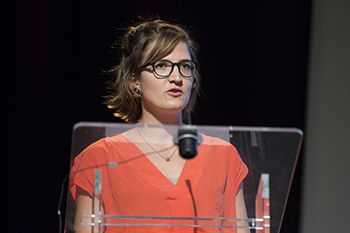Escape room: a fun and effective way to learn good manufacturing practices
24 October 2018
Faustine Berthod , Dr Lucie Bouchoud, Prof Pascal Bonnabry Geneva University Hospitals, Pharmacy, Geneva, Switzerland
Summary
Introduction and objectives : Chemotherapy is a high-risk process for pharmacy technicians during production. To control and decrease these risks, initial and continuous education on good manufacturing practices (GMP) is needed and compulsory. This project aimed to validate an innovative teaching method on GMP mixing simulation and serious game.
Method
A pre-assessment and two post-assessments (immediate and a month after the experience) consisting of 23 theoretical questions were used to measure operator’s knowledge on GMP. These questions were integrated into the Esclean Room as mysteries. The Esclean Room was, in fact, an escape room that took place in a simulated clean room, allowing the learners, playing in tandem, to refresh their knowledge on GMP and to reflect on their professional practices throughout the production of a fictive chemotherapy. The impact of the tool on GMP knowledge was measured both with the percentile of correct answers in each of the 3 assessments and with the learner’s degree of certainty about his or her expertise. The degree of certainty allows the evaluation of each answer on behalf of the assurance and the correctness of each learner. A satisfaction survey was filled in at the end of the experience.
Results
This new pedagogic approach was tested with 72 learners (43% pharmacists, 57% pharmacy technicians/pharmacy assistants) between September and December 2017. The tool showed a positive impact with an increase in the number of correct answers and an increase in the certainty (in correlation with the correctness of the answers) after the educational intervention. The participants answered correctly to 941 out of 1656 questions (56.8%) at the pre-assessment with a scoring of 16491/33120 (49.8%). At the second post-assessment, they answered correctly to 1028 out of 1288 questions (79.8%) with a scoring of 18066/25760 (70.1%). Even though 68% had never taken part in an escape room before, 79% have appreciated this kind of educational tool and 100% would recommend it to colleagues.
Conclusion
This project permitted to build a pedagogical escape room thematising a high-risk process, the compounding of chemotherapies. We have been able to demonstrate the positive impact of the use of simulation in pharmacy production to increase theoretical knowledge, as well as a very positive opinion of operators for this fun way to learn.